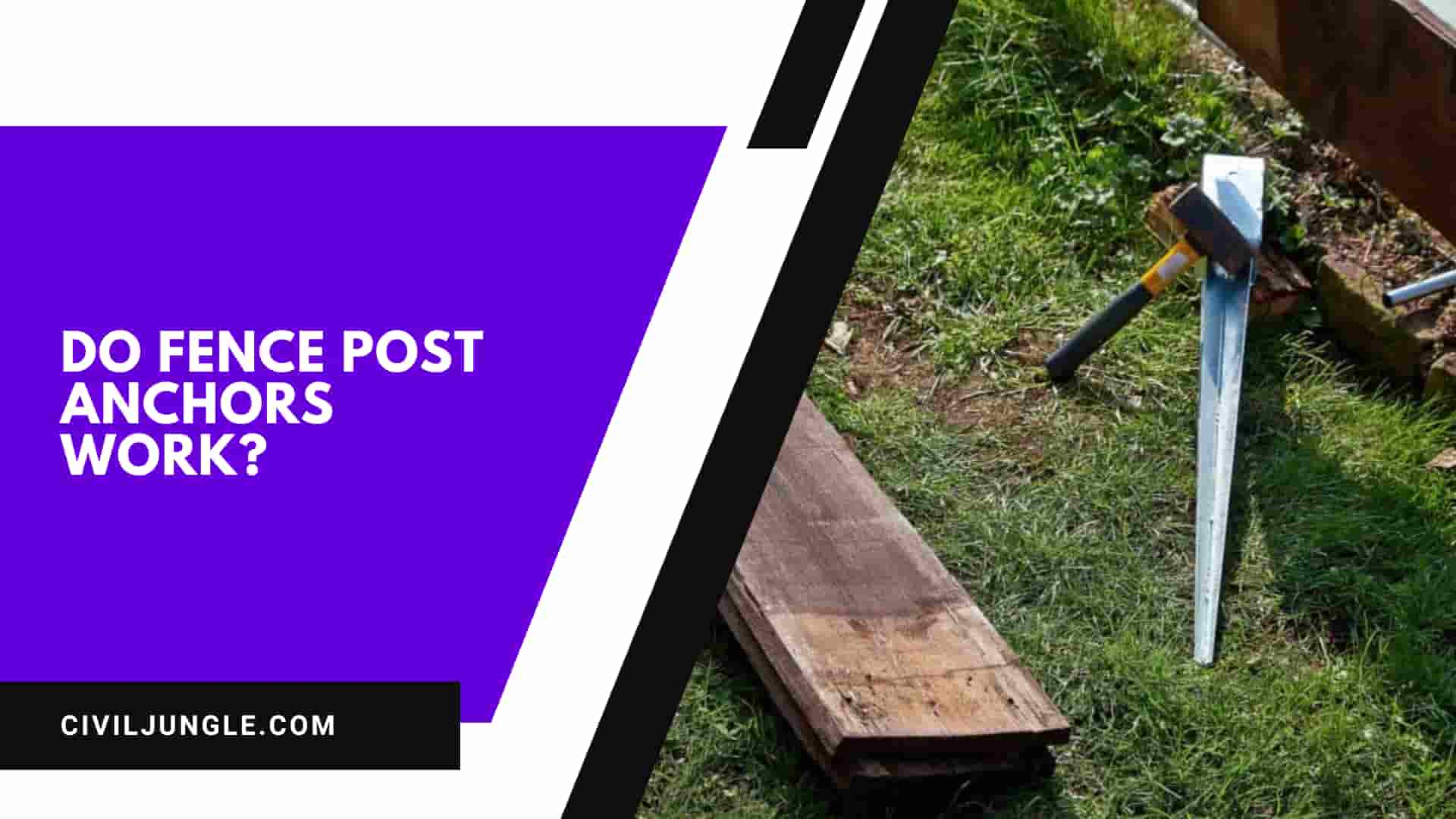
Do Fence Post Anchors Work?
A fence can be supported with the help of fence post anchors without the need for holes to be formed or concrete is not required to be poured. Fence anchors are quite simple to be used. Each anchor will be inside the soil below the ground level. The depth of the spike might range between 18-30 inches.
The depth of the shaving has two parts, consisting of a sleeve and a spike the spike will be ranging about 6 inches above the ground, the spike will be driven like being more will help in gaining more strength.
A wood block along with a sled hammer is made in use for driving the fence post. The wood is used in order to make the metal portion of the fence post safe from getting damaged while hammering.
After the required portion of the anchor is driven into the ground, a post of size 4*4 will then be made to slide into the sleeve, at last, it is tightened with the help of sleeve bolts.
Though fence post anchors are an easy and quick process for setting the fence post, they also have some limitations. It will not provide similar strength as setting fence posts into concrete, as anchors are light and shallow as compared to concrete.
A thumb rule should be maintained i.e., the fence post should be about 1/3rd to 1/2nd inside the ground. Like if example is taken, a fence having a height of 7ft in total must consist of a post that will be buried in between nearly about 2.33ft to 3.5ft. If these rules are followed post anchors will be too superficial for tall fences.
In heavy winds, the post anchors can be easily pulled out by the winds as there is no concrete. At the same time, it can be as an advantage because they can be easily reused by pulling out.
What Is a Fence Post Anchor?
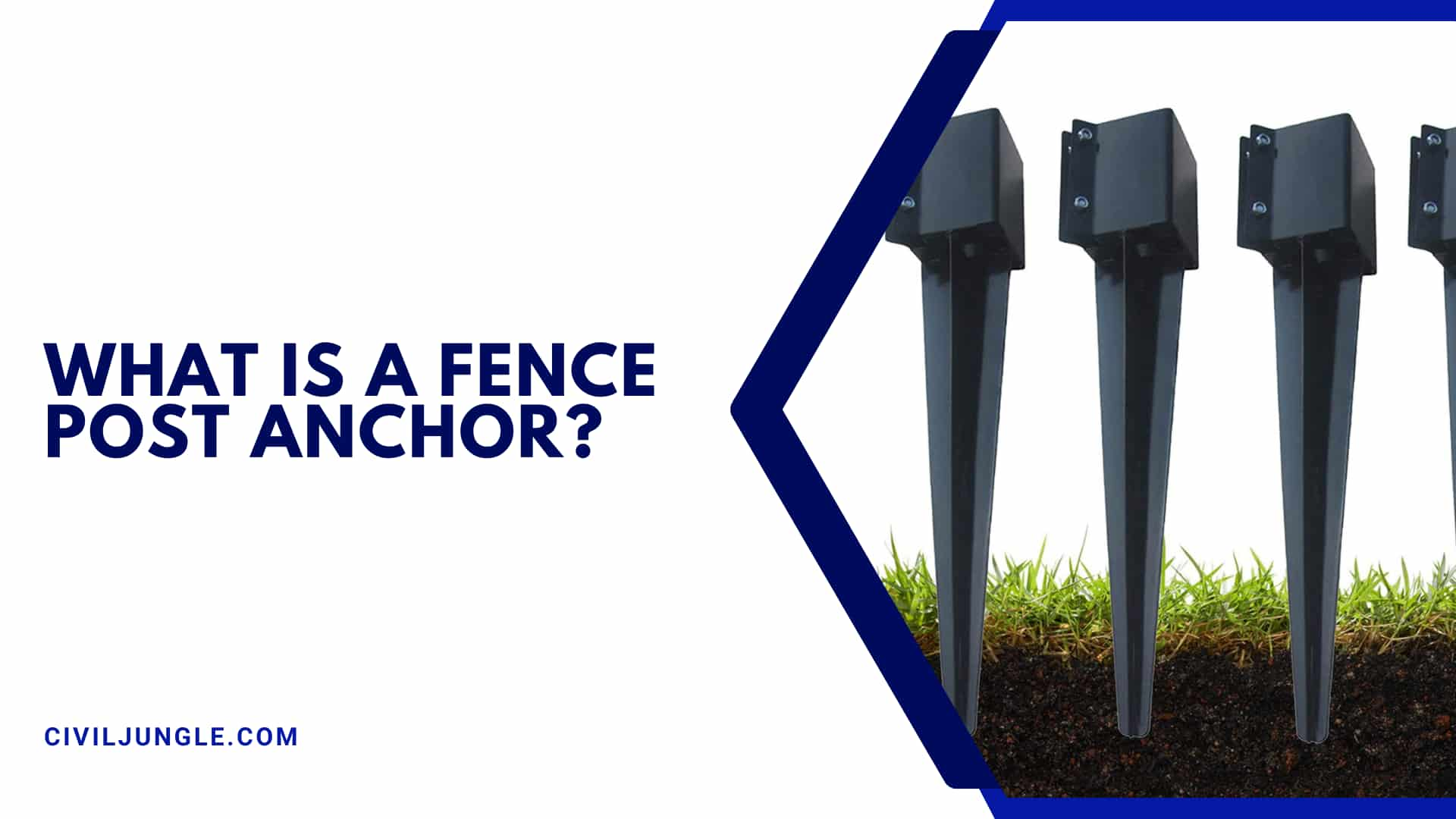
A fence post anchor is used for giving support to fence posts without the use of any type of hole or concrete, these posts are made from galvanized steel and are generally black-colored with the help of a powder coating process.
The anchors will consist of two parts in it, a sleeve extending above the ground, and a spike inserted in the ground. After placing the spike inside the ground, the outward sleeve will be covered by a 4*4 and then properly stiffened.
The spike will give proper support to the fence post so, the depth of the spike under the ground is very much essential. Greater will be its depth greater will be the strength.
Heavy-duty steel is used for its construction, it will help the fence to last for about many years without any rust or rot in them. The bolts to be used are made from stainless steel which will not easily rust.
Both fence post anchors and bolts are made from galvanized steel or stainless steel, they can be safely used by us in any type of weather conditions.
How to Install a Fence Post Anchor Spike?
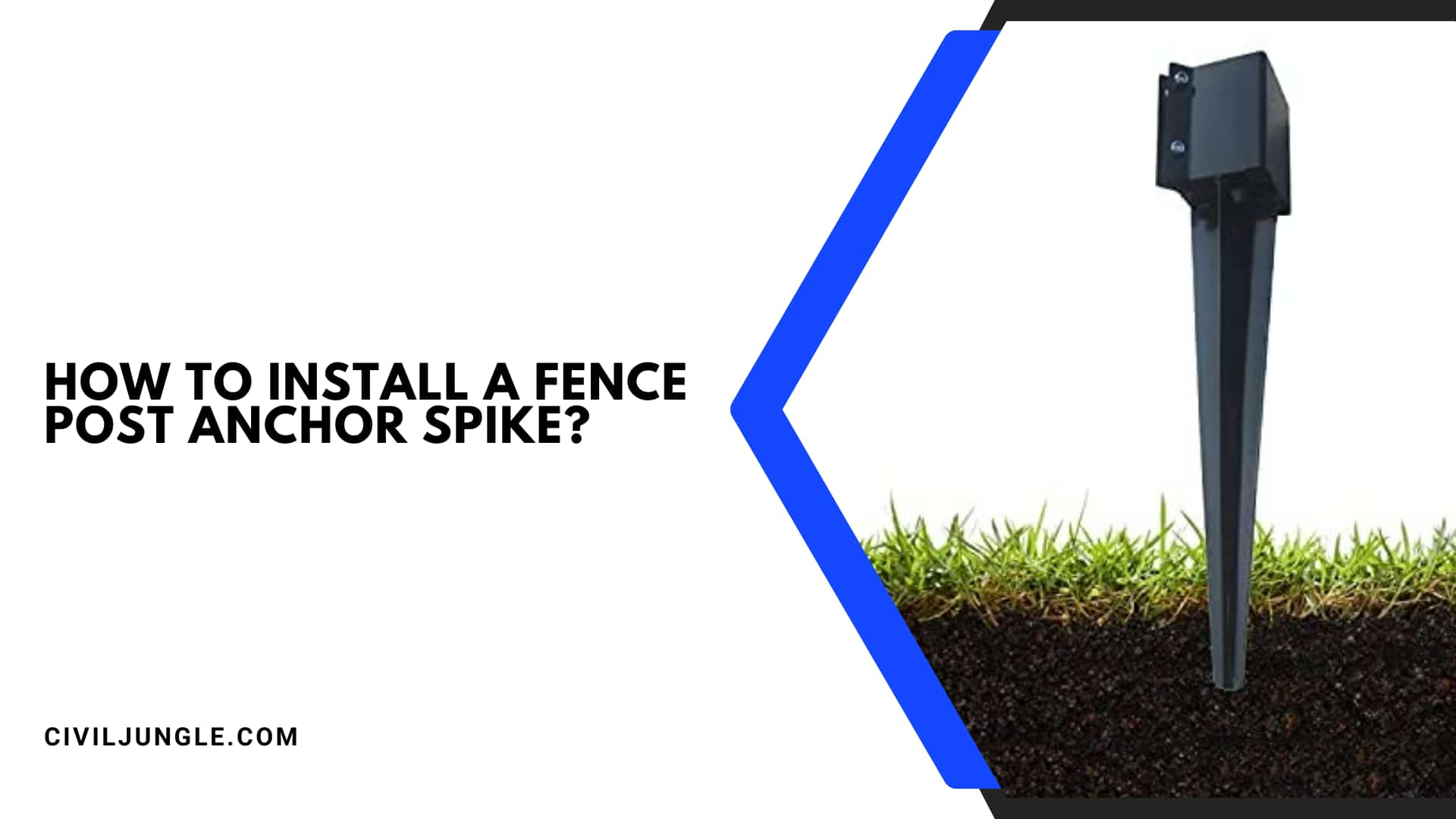
Without any digging or concrete work, makes fence post anchor spike installation a fast and easy process.
Mark the spot and place the spike on the marked spot, then drive it with the help of a sledgehammer. While hammering it should not be hammered directly, a wood block must be used to prevent damage.
While driving the anchor it should be made sure the level is perfect with the help of a plumb. The level should be checked so that the anchor being angled if not properly leveled will lead to the angled placement of the post.
If the anchor is placed at an angle, then the post cannot be adjusted, which can be done in concrete as concrete takes time to settle.
The spike should be driven properly into the ground. Until it is achieved it should be given hit at a continuous pace. The sleeve part should be just touching the ground level it should not be driven inside the ground.
It is recommended to insert into the sleeve a 1-foot piece of size 4*4. In many post anchors holes are present through which screws can be driven. Anchors having these holes should be made sure to have bolts or graded screws.
How do Set Fence Posts with Fence Post Anchors?
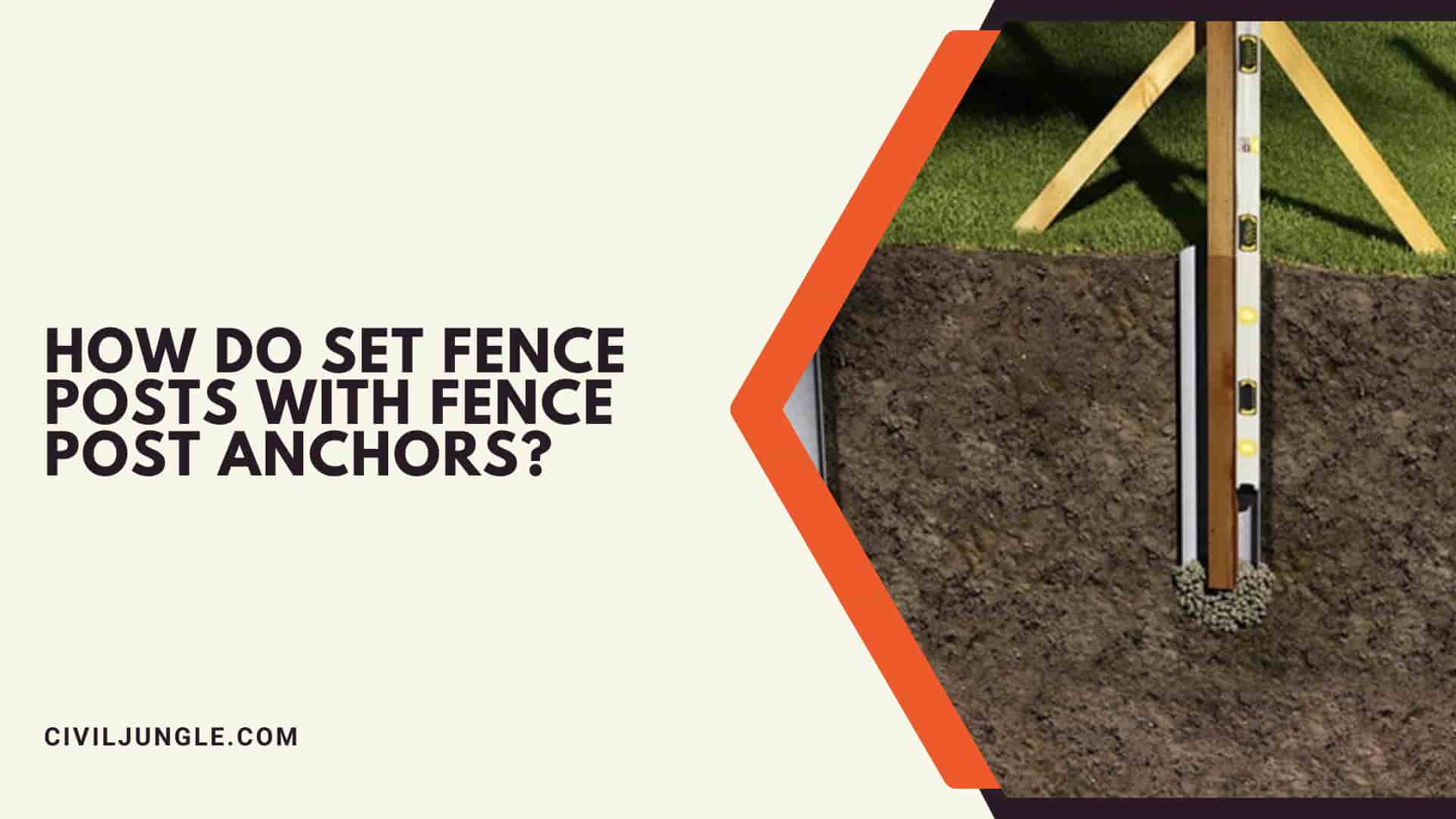
The laying of the fence and then driving the anchors is the toughest part of the process.
The list of tools that will be required are:
- Sledgehammer- Mini sledgehammer is generally used by professionals, but large sledge hammers is best suited where hard grounds are present, although hard grounds are generally made soft by applying water.
- Wood Block- 1-foot section of 4*4 is used which should not be directly hit.
- Plumb Bob– Used for proper leveling of the arrangement.
- Marking Equipment- Paint should always be used for marking in addition to strings with stakes and tape measure. The marking should be started from where each post has gone. The string and stakes can be used for marking fence lines. After that tape measure can be used, and paint is finally applied for marking.
After the posts are properly marked, the driving of anchors should be started without any delay. While driving anchors there should be no tilting, as tilting of the anchor will lead to the tilt of the fence.
After inserting the posts on the set anchors, they should be tightly fixed with the help of bolts. After all the above steps are carried out the fence can be properly installed.
How Do You Secure a Fence Post Without Digging?

Without any use of concrete and no digging, post anchors can be made to use. The spike of anchors helps in carrying the most load.
The deeper these spikes would be embedded, the better will be the support for the fence. Its fast and easy-to-be-used nature makes it very useful for us, as it will need any kind of digging or concreting.
While the fence post is to be set with concrete a deep hole is to be dug first, while on the other hand for anchors one spike is to be driven per post. So, not a single quantity of digging is required. Now the spike is placed totally inside the marked ground, the post is inserted and then bolted.
The spike is to be properly driven into the ground as it will provide the total strength for carrying the fence. The fence post must go 1/3rd to 1/2nd inside the ground.
A sledgehammer is used for installing fence post anchors along with wooden blocks. After all the above steps proper bolting is to be done For securing the fence expanding foam is used around the sides of the post.
For moving the fence when required, it can be unbolted easily and then moved again it can be reused when required. These anchors are much easier to be pulled out in a vertical direction as compared to pulling out from concrete fixing.
As the post does not enter the ground it will have less risk to get rotting. While due to the course of time with the contact of the atmosphere if rotting starts it can be easily changed if the process of anchoring is done rather than concreting.
Do Fence Post Spike Work?
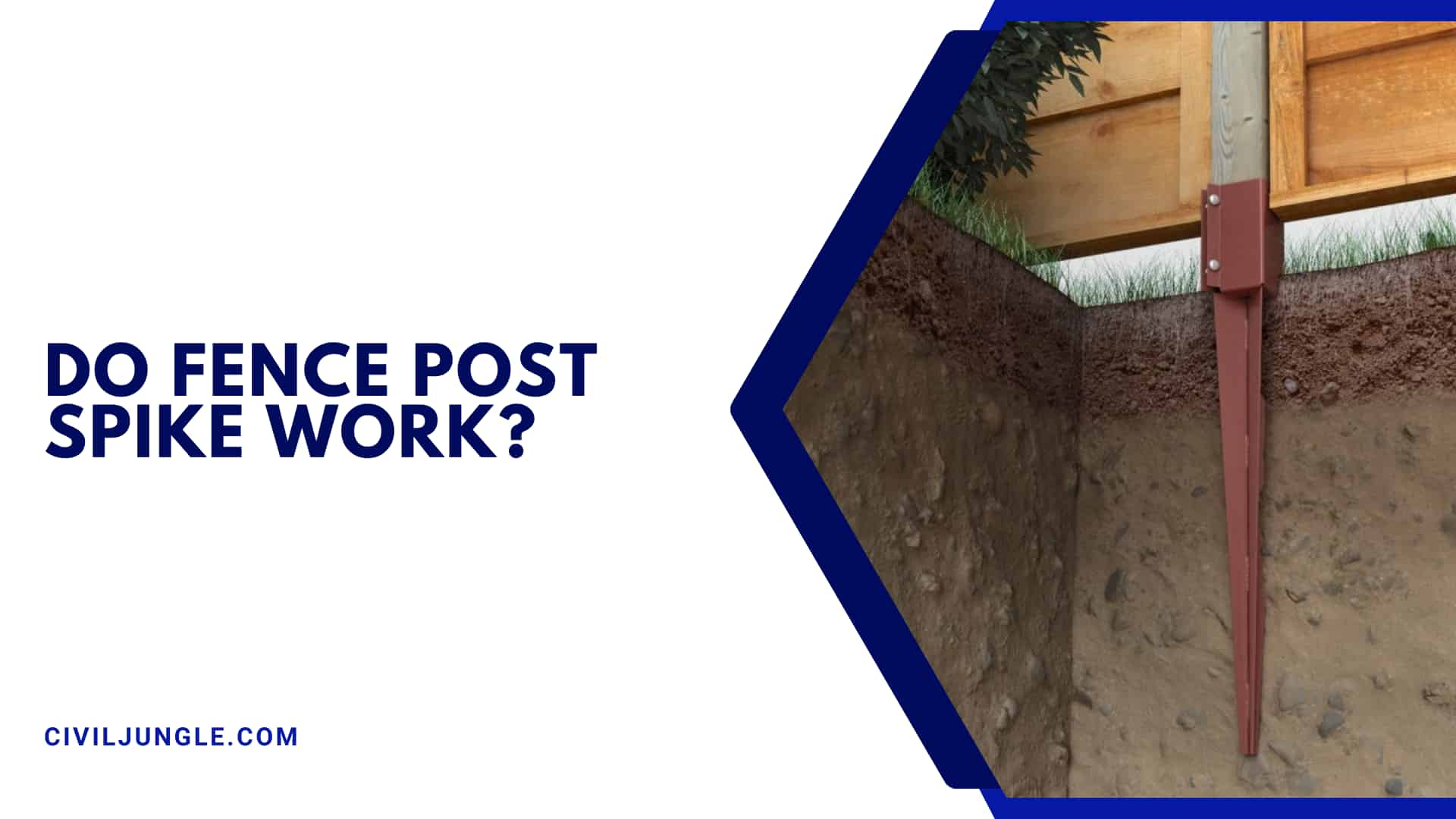
Fence postwork can be easily used for supporting many fences. Just certain rules should be followed by us then it will be totally fine to work. The rules are that 1/2nd or 1/3rd of the total length of spikes total length must be below the ground.
Generally, post anchors have 18 to 30 inches below ground. The anchors in general conditions work better with fences having a low length and lighter weight.
Fences having anchors back to the house with fewer corners are likely to be used for support. Houses and their 90-degree corners help us to stabilize the fences.
The anchors have spike-shaped appearance and features. This aspect makes them easier to be driven to the ground while at the same time, they can be pulled out easily when required. So, in areas having vertical winds, these anchors should be avoided.
Chain-link fences are best to work on anchors. Winds generally blow through the fence being that updraft will not be a big issue. If chain-link fences are used they will decrease the weight to be carried as being lighter than solid privacy fences.
FAQ on Fence Post Anchors
What Is a Fence Post Anchor?
A fence post anchor is a support device designed to hold fence posts in place without the need for digging holes or pouring concrete. It typically consists of a sleeve and a spike, with the spike driven into the ground and the sleeve holding the fence post above ground.
How Do You Install a Fence Post Anchor?
To install a fence post anchor, mark the desired location, position the spike, and drive it into the ground using a sledgehammer and a wood block to protect the metal. Ensure the anchor is level, then slide a fence post into the sleeve and secure it with bolts.
What Are the Benefits of Using Fence Post Anchors?
Fence post anchors offer a quick and easy installation process without the need for digging or concrete. They are reusable, less prone to rotting, and can be adjusted or moved if necessary. They are particularly useful in areas where digging is difficult or prohibited.
Are There Any Limitations to Using Fence Post Anchors?
Yes, fence post anchors may not provide as much strength or stability as concrete footings, especially for tall fences or in high-wind areas. They are best suited for lighter fences and may be less effective in extremely windy conditions.
How Deep Should Fence Post Anchors Be Installed?
The depth of the anchor spike should generally be between 18 to 30 inches below ground level. For best results, the post should be set so that 1/3rd to 1/2nd of its length is buried underground.
Can Fence Post Anchors Be Used in All Types of Soil?
Fence post anchors work well in most soil types, but extremely rocky or sandy soils may pose challenges. For very hard ground, you might need to soften it with water before installation.
How Do You Secure a Fence Post with a Fence Post Anchor?
After driving the anchor into the ground, insert the fence post into the sleeve and tighten it with bolts or screws. Make sure the post is level and properly aligned before securing it.
Can Fence Post Anchors Be Reused?
Yes, one of the advantages of fence post anchors is that they can be easily removed and reused. This is particularly useful if you need to relocate the fence or make adjustments.
What Tools Are Needed for Installing Fence Post Anchors?
You will need a sledgehammer, a wood block, a plumb bob for leveling, marking equipment such as paint, stakes, and a tape measure. Additionally, bolts or screws are required for securing the post.
How Do Fence Post Anchors Compare to Traditional Concrete Footings?
Fence post anchors are quicker and easier to install compared to concrete footings, but they may not offer the same level of stability and strength, especially for taller or heavier fences. Concrete footings provide greater support but require more time and effort for installation.

